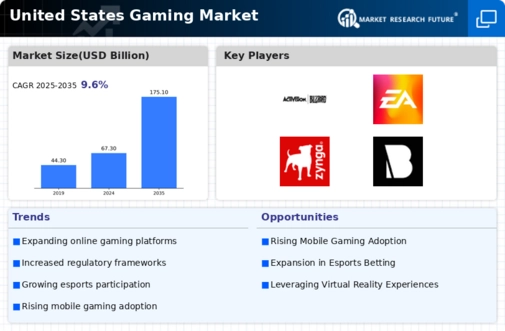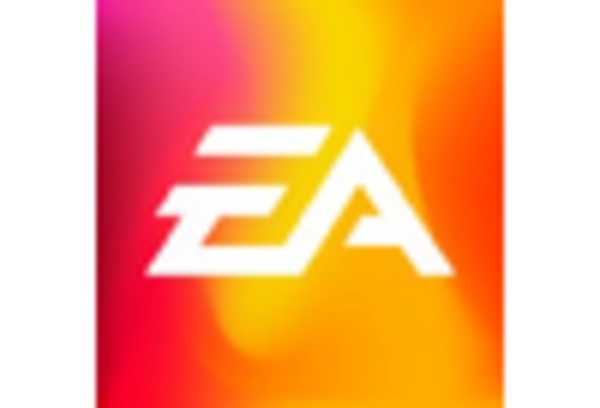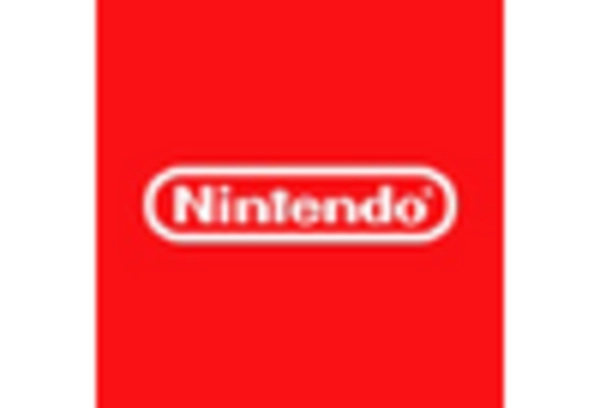Emergence of Cross-Platform Play
Cross-platform play is becoming a significant driver in the gaming market. This feature allows players on different gaming systems to interact and compete, breaking down barriers that previously existed between platforms. As of 2025, it is estimated that over 40% of new games will support cross-platform functionality, enhancing player engagement and satisfaction. This inclusivity fosters a larger gaming community, encouraging players to invest in games regardless of their chosen platform. The ability to play with friends across different systems is likely to enhance loyalty to specific titles, further solidifying the market's growth.
Growth of Streaming Services for Gaming
The proliferation of streaming services is reshaping the gaming market. Platforms such as Twitch and YouTube Gaming have transformed how games are consumed and shared. In 2025, the revenue generated from gaming streaming is anticipated to surpass $10 billion in the US. This growth is indicative of a cultural shift where gaming is not only a solitary activity but also a form of entertainment that can be shared with audiences. The rise of content creators and influencers further amplifies this trend, driving interest in various games and encouraging new players to join the gaming community.
Increased Investment in Game Development
Investment in game development is a crucial factor influencing the gaming market. As the demand for high-quality games rises, developers are allocating more resources to create engaging content. In 2025, the total expenditure on game development in the US is projected to exceed $20 billion. This influx of capital allows for the exploration of innovative gameplay mechanics and storytelling techniques, which can attract a wider audience. Furthermore, the emergence of indie developers is diversifying the market, offering unique gaming experiences that cater to niche audiences, thus enriching the overall landscape.
Expansion of Online Multiplayer Platforms
The rise of online multiplayer platforms is a pivotal driver for the gaming market. With platforms like Steam, Xbox Live, and PlayStation Network, gamers can connect and compete globally. In 2025, online gaming is expected to account for over 60% of total gaming revenue in the US, highlighting the shift towards social gaming experiences. This trend fosters community engagement and encourages players to invest in gaming, thereby propelling the market forward. The ability to play with friends and strangers alike enhances the appeal of gaming, making it a more integral part of social interaction.
Technological Advancements in Gaming Hardware
The gaming market is currently experiencing a surge in technological advancements, particularly in hardware. Innovations such as high-performance graphics cards, faster processors, and enhanced VR headsets are reshaping the gaming experience. In 2025, the market for gaming hardware is projected to reach approximately $45 billion, driven by consumer demand for immersive experiences. These advancements not only improve gameplay but also attract a broader audience, including casual gamers. As hardware becomes more accessible, the gaming market is likely to see increased participation from diverse demographics, further expanding its reach.

















Leave a Comment